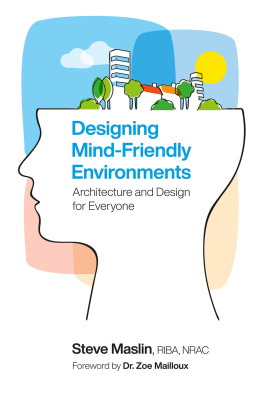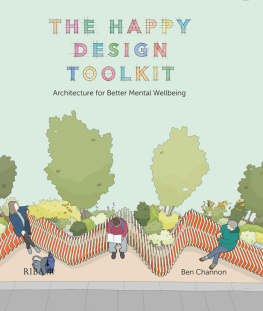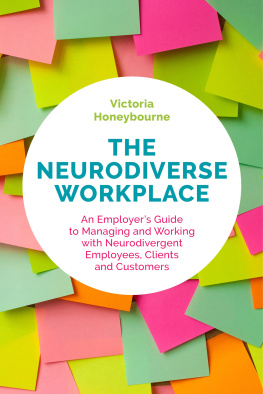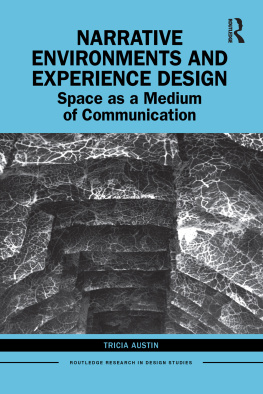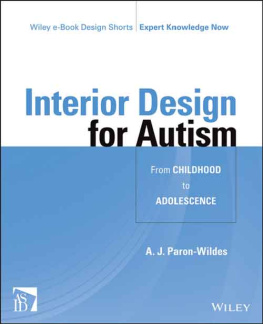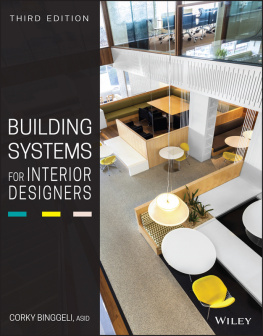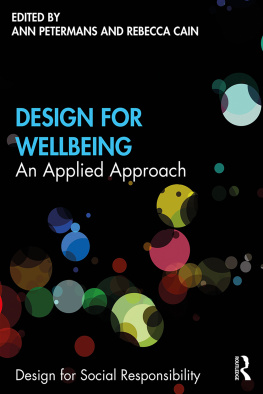Contents
Page list

of related interest
Sensory Perceptual Issues in Autism and Asperger Syndrome, Second Edition
Different Sensory Experiences Different Perceptual Worlds
Olga Bogdashina
Foreword by Manuel Casanova
ISBN 978 1 84905 673 1
eISBN 978 1 78450 179 2
Living Sensationally
Understanding Your Senses
Winnie Dunn
ISBN 978 1 84310 915 0
eISBN 978 1 84642 733 6
Design for Nature in Dementia Care
Garuth Chalfont
ISBN 978 1 84310 571 8
eISBN 978 1 84642 676 6
Bradford Dementia Group Good Practice Guides
Designing
Mind-Friendly
Environments
Design and Architecture for Everyone
Steve Maslin, RIBA,
FSI, NRAC
Foreword by Zoe Mailloux,
OTD, OTR/L, FAOTA

First published in Great Britain in 2022 by Jessica Kingsley Publishers
An Hachette Company
Copyright Steve Maslin, Dip Arch, RIBA, FSI, NRAC 2022
Foreword copyright Zoe Mailloux, OTD, OTR/L, FAOTA 2022
All rights reserved. No part of this publication may be reproduced, stored in a retrieval system, or transmitted, in any form or by any means without the prior written permission of the publisher, nor be otherwise circulated in any form of binding or cover other than that in which it is published and without a similar condition being imposed on the subsequent purchaser.
A CIP catalogue record for this title is available from the British Library and the Library of Congress
ISBN 978 1 78592 142 1
eISBN 978 1 78450 414 4
Jessica Kingsley Publishers policy is to use papers that are natural, renewable and recyclable products and made from wood grown in sustainable forests. The logging and manufacturing processes are expected to conform to the environmental regulations of the country of origin.
Jessica Kingsley Publishers
Carmelite House
50 Victoria Embankment
London EC4Y 0DZ
www.jkp.com
Contents
Acknowledgements
I would especially like to acknowledge my immediate family who have provided me with the time and context in which I could pursue the writing of this book. Thank you, Christine, and thank you too, Hannah and Joseph, for also modelling for many of the photographs contained within this book. Thank you also to Hannah for assisting with processing some of the images too.
It would also be apt to give thanks to both my parents, Roger and Meg, and to my teachers, since without their help and encouragement I could so easily have struggled to get to the point of writing this book. The teachers that stand out in my mind are Mr Webb (my head teacher who listened and learnt about dyslexia), Mr Elliott (my classroom teacher who encouraged me) and Mrs Mayo-Smith (my English teacher who provided me with extra tuition), but there are many others whom I owe my thanks to also.
Since portions of what I have written are derived from earlier writings (listed in the Author Biography), I would like to acknowledge the following organizations for providing me the opportunity to put my early thoughts down:
The Centre for Accessible Environments, publisher of A Favourite Building: The New Room, Bristol (Maslin 2005)
Workplace Law Group, publisher of Fire and Disability 2008 Special Report, edited by Claire Fuller (Maslin, 2008)
The Nature of Cities (TNOC), publisher of What Are We Trying to Accomplish with Biophilic Cities? What Are Ambitious Goals and Targets, and Measures of Success? (Maslin, 2017)
my former employers, Stride Treglown.
A shout-out also goes to my current employers, Atkins, who take a positive stand with regard to peoples neurodiversity, foster an internal neurodiversity network and have embarked on a journey towards greater inclusion, including acknowledging the contribution that diverse staff bring to a business and exploring better ways of recruiting people with neuro-atypical minds.
I would also like to acknowledge a whole range of people for those inspiring conversations or written exchanges that helped me on my journey (many of whom get a mention in this book and are referenced in the Bibliography). In particular, I would like to thank Dr Zoe Mailloux, Adjunct Associate Professor of Occupational Therapy at Thomas Jefferson University, for agreeing to write the Forward to this book. I would like to thank her for her enthusiasm for the role that architecture could have in delivering mind-friendly environments. I would also like to thank neuropsychologist Dr Ute Leonards, Professor of Neuropsychology at the University of Bristol, for reading through an earlier draft of my book, providing me with feedback and drawing me in to her world of psychology whilst valuing my thoughts as an architect.
Occupational therapist Dr Winnie Dunn, Distinguished Professor of Occupational Therapy at the University of Missouri, should also get a mention for her encouragement and her inspirational book Living Sensationally: Understanding Your Senses (Dunn, 2007). Thank you too to occupational psychologist Dr Craig Knight, UX designer Alistair Somerville and sensory lab owner Steven J. Orfield for conversations that have contributed to my thinking.
Last, and by no means least, as a Christian, it would also be inconsistent of me not to acknowledge the role that I believe God has had in directing my paths and to acknowledge that it is His natural creation that enables the facilitation of mind-friendly environments. I would not want to pretend either that just enabling mind-friendly environments is all our minds need. Therefore, I wish to thank my Lord and Saviour, Jesus, the Prince of Peace, for so wonderfully expressing Gods love, which I have found so essential for our ultimate wellbeing.
Disclaimer
Whilst it is sad to have to spell this bit out, it is necessary for legal reasons to make it clear that:
opinions expressed in this book are given in good faith and are solely for the purpose of prompting thought and discussion, for which readers take their own responsibility
reading and acting on this book is not a substitute for advice obtained through formal professional appointments directly with architects, access consultants or other professionals
without the presence of any formal appointment, the author and the businesses/organizations with which he is and has been associated accept no liability for the decisions or actions of readers and/or others acting on their behalf.
Foreword
As an occupational therapist interested in the powerful influence that ones environment exerts on all aspects of human life, I am thrilled to introduce Designing Mind-Friendly Environments . That my path would cross with architect and author Steve Maslin in such a significant way has been fortuitous, but perhaps not surprising. In fact, the very name of my profession, occupational therapy, was coined by an architect, Edward Barton, is inextricable from environmental considerations.
As research assistant to Dr A. Jean Ayres, the founder of sensory integration theory and practice, I was fortunate to have a first-hand view of the impact of her groundbreaking work. Steves incorporation of sensory integration principles into design considerations would impress and please Dr Ayres. His understanding and application of the ways in which all the senses guide and impact our response to environments is exquisite. Steves description of his own learning struggles is not unlike those Dr Ayres herself experienced. Their revelations are reflective of the ways that all humans process and understand best that is, through personal experience. The fact that Steve so strongly and clearly promotes a universal approach to mind-friendly environments is a testament to his awareness that everyone lives, learns, plays and works better when the environment supports all.

